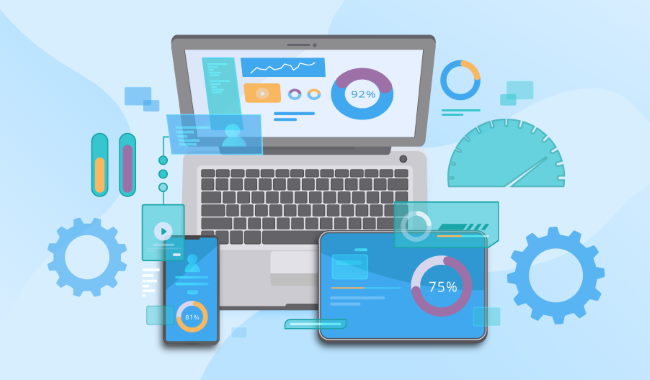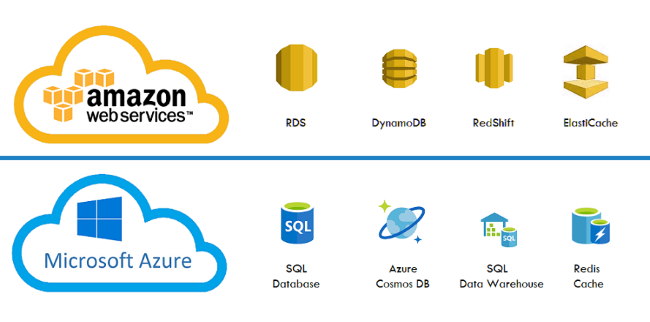Performance issues are a major concern for many devs, and have an impact (or should) on almost every development and investment decision you make. Ensuring fast, reliable performance is one of the primary reasons for choosing on-premises vs. private cloud, for instance, and one of the primary reasons why companies are turning to advanced analytics platforms like Count.ly.
Application Performance Management (APM) is not a new concept, but it is one that is growing in importance as firms roll out increasingly complex web and mobile apps. Performance monitoring is no longer a question of checking the data write speeds of your in-house servers, or making sure the various components of your web app are playing nicely together: in contemporary systems, there are simply too many components for an engineer to keep track of, no matter how gifted he or she is.

In this guide, we’ll look at contemporary APM systems. We’ll explain what they can do, what to look for in an APM, and how they can help you to attract and retain customers.
What is APM?
Historically, the term “APM” was regarded as standing for “Application Performance Management”. More recently, however, the definition of the term has shifted somewhat. Now that engineers have the ability to access real-time data on the performance of their web apps, and the ability to respond to problems on-the-fly, the term has increasingly been seen as standing for “Application Performance Monitoring”.
APM is a huge field, but is essentially focused on one thing: ensuring that apps and their associated systems run quickly and reliably.

This is a simple enough objective, but the complexity of many contemporary web and mobile apps means that APM necessarily involves many discrete systems and components. Gartner, in their definition of the term, highlights three key aspects of modern APM systems:
- Digital experience monitoring (DEM)
- Application discovery, tracing and diagnostics (ADTD)
- Artificial intelligence for IT operations (AIOps) for applications
Each of these aspects relates to a relatively discrete set of performance management and monitoring tools, but each is also related to the others. Let’s take a more detailed look at each.
Digital experience monitoring (DEM)
DEM is the user-facing component of APM systems. Digital Experience is now a major focus for many web and app developers, and the performance of user-facing systems is, in turn, a key component of user experience.

DEM systems, when applied as part of an integrated APM suite, typically comprise two components. One is real user monitoring, similar to the kind of advanced analytics that most firms now apply to their web applications, but focused on performance. The second is that some APM systems also have the capability of simulating user interactions through digital agents.
This second approach allows huge amounts of performance data to be generated in a short period, and in advance of the consumer launch of apps, allowing any performance issues to be detected by web-based monitoring tools and addressed before they affect real-life user experience.
Application discovery, tracing, and diagnostics (ADTD)
ADTD focuses on another part of the application operation cycle. This element of APM systems seeks to understand the way in which web and mobile apps operate at a deeper level, by tracing the way in which the consumer-facing elements of an app interact with underlying systems.

ADTD is one of the primary advantages of modern APM systems, because of the sheer complexity of many contemporary web and mobile apps. A decade ago, most of these apps ran from a single set of in-house servers, for instance, whereas now even a basic app will make use of multiple cloud infrastructures, which can often conflict with each other and slow app performance.
By understanding the dependencies of apps, engineers can use their APM system to isolate and ameliorate bottlenecks, and to identify where errors in one system could have a catastrophic effect on the operation of others.

Artificial intelligence for IT operations (AIOps) for applications
AIOps for applications is the newest part of APM, and not all APM systems are currently making use of AI analysis. However, for firms seeking to utilize the huge amounts of data generated by web analytics and APM systems, AI is quickly becoming a natural choice.
There are several ways in which AI can help engineers working in application performance monitoring. One is that AI systems are able to perform root-cause analysis much more quickly than the average engineer, and so can map dependencies and interactions between app components much more quickly. The second is that, by drawing on ML techniques, these systems can be taught to deliver alerts in advance of key performance issues, giving devs advanced warning of imminent bottlenecks or system failures.
Key Features of APM
Beyond the three major components of APM systems that we’ve covered above, quality APM systems will offer you a number of key features that can dramatically improve your oversight – and control – over the performance of your web and mobile apps. In this section, we’ll look at these.
The Challenges
First, however, it’s important to recognize that the implementation of APM means that you will need to meet a number of challenges. Most of these are shared with web analytics systems, and so firms that have taken the (wise) investment decision to roll out data analytics will already be aware of them.

They include, for instance, the ability to responsibly store data relating to customer interactions, in order to both protect this from theft and to stay compliant with data privacy legislation, and having the human resources available to continually monitor performance data.
For most companies, meeting these challenges will be a question of choosing an APM system and provider which is committed to responsible data retention, and is willing to take responsibility for the resources and processes required to achieve compliance.
Cost and Scalability
A second area of concern when it comes to rolling out APM for web and mobile apps will be the cost associated with this. Given the performance gains that can be made through such systems, however, as well as the concomitant effects on customer retention and profitability, it is worth looking for lending to cover the up-front cost of an APM system

The cost of your APM system will also be dependent on the scale over which you plan to deploy it. Most systems are built with contemporary web and mobile apps in mind, and are therefore capable of dealing with large, complex, interconnected application infrastructures. However, as your user base expands, the cost of data analysis and storage can increase dramatically. Again, however, for most firms meeting this challenge will be a case of choosing an APM system wisely.
Customization and Centralization
The value of integrated APM systems for web and mobile developers and engineers is that these systems allow all of the components of a given app to be managed from a centralized dashboard. Systems that are configured in this way can help to avoid the necessity to use multiple tools to monitor the performance of individual systems, and to limit the data overwhelm associated with fragmentary systems.

On the other hand, achieving a truly integrated APM system can be difficult. An increasing number of companies are now making use of multi-cloud infrastructures in which remote cloud storage is paired with in-house systems. A quality APM system will be able to monitor the performance of both types of cloud, and then integrate these data into a central dashboard in which issues with either can be identified.
For this reason, it’s critical that firms look carefully at the APM solutions available to them, and specifically at the level of customization they can achieve through each. Ideally, APM systems should be designed – likely in collaboration with a vendor – from the ground up, and incorporate every single system that a web or mobile app makes use of.
Application Discovery and Dependency Mapping (ADDM)
The need to customize APM systems at the earliest possible opportunity will mean that engineers will need to perform detailed and exhaustive system mapping before assessing what they need from such a system. However, once in place an APM system can make further instances of system mapping much more effective.
This is because most APM systems can automatically scan networks in order to discover all the applications and servers you are making use of. It should also be able to categorize these according to their function, and to provide you with a visual representation of the relationships between them.
The advantage that this kind of dependency mapping affords should be clear: it allows engineers to instantly (or at least quickly) see where performance bottlenecks are arising, and to focus their efforts on the issues that are having the largest effect on the performance of their apps. Without an APM system, much time is wasted wading through multiple apps, servers, and storage systems in an attempt to isolate a poorly performing element. APM systems can help you to avoid this.

KPIs, Monitoring, and Reporting
APM systems are about far more than just avoiding catastrophic app performance issues, however. They are also capable of being used to produce regular reports of web and mobile app performance which feed directly into the existing reporting structures of your company.
Some of the KPIs produced by APM systems relate to the technical performance of your apps. Among these are statistics on response times, requests per minute, thread and session details, CPU utilization, disk and memory utilization, and error states of key components. These statistics will be primarily of use to engineers, but can also help to identify where investment should be made in order to improve performance.
It’s also possible, though, to use the data produced by APM systems in conjunction with fiscal KPIs. By drawing together data on app performance and user experience and compiling the data into a simple profit-and-loss statement, managers are able to assess the impact of poor performance on their profitability, and therefore the ongoing sustainability of their business model.
Alerts and End User Experience
Finally, let’s not forget about the end user. APM systems contain two primary elements that can allow companies to deliver better user experience: alerting, and synthetic user assessment.
Alerting is one of the most important features of APM systems, and one that (as above) can also benefit from AI tools. The principle behind alerts in APM is simple: engineers should be immediately appraised of any performance issues with their web and mobile apps. However, quality APM systems will also be able to perform a number of actions automatically in response to an alert being triggered. These actions could comprise, for instance, notifications over SMS or Email, restarting a server or VM, or generating error reports.
Secondly, the ability of some APM systems to use synthetic transaction monitoring greatly extends your ability to assess the user experience offered by your apps. These transactions can be used to assess a huge variety of metrics on the performance of your apps, and to simulate highly unusual user behavior in order to ascertain the fragility of your systems.
The Bottom Line
Though APM systems will be of great utility to the vast majority of firms who own or manage web or mobile apps, they will also need to carefully consider which solution to invest in. The power of an APM system stems from its ability to collect performance data from across your entire system architecture, and as such you need to ensure that any APM system is able to integrate with all of your key components.
Once an APM system is up and running, however, and you have written effective documentation in order to ensure that everyone who needs to can access and use the system, it will offer significant advantages. Among these are the ability to monitor performance in real time, generate automated alerts regarding performance and errors in your apps, and ultimately improve the end user experience you offer to your customers.